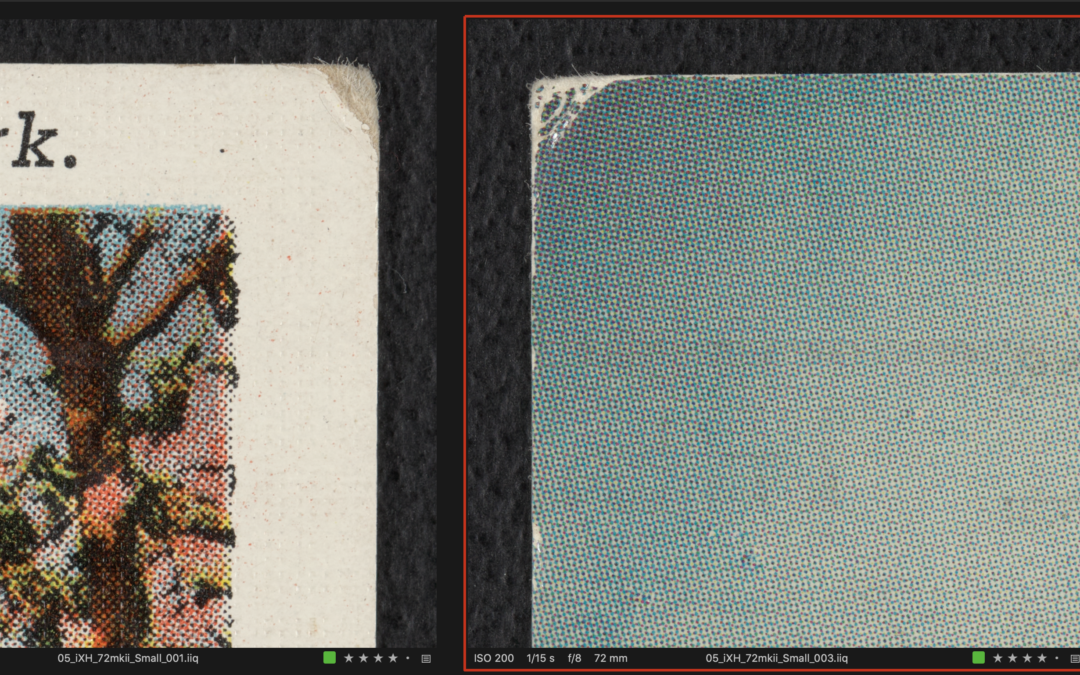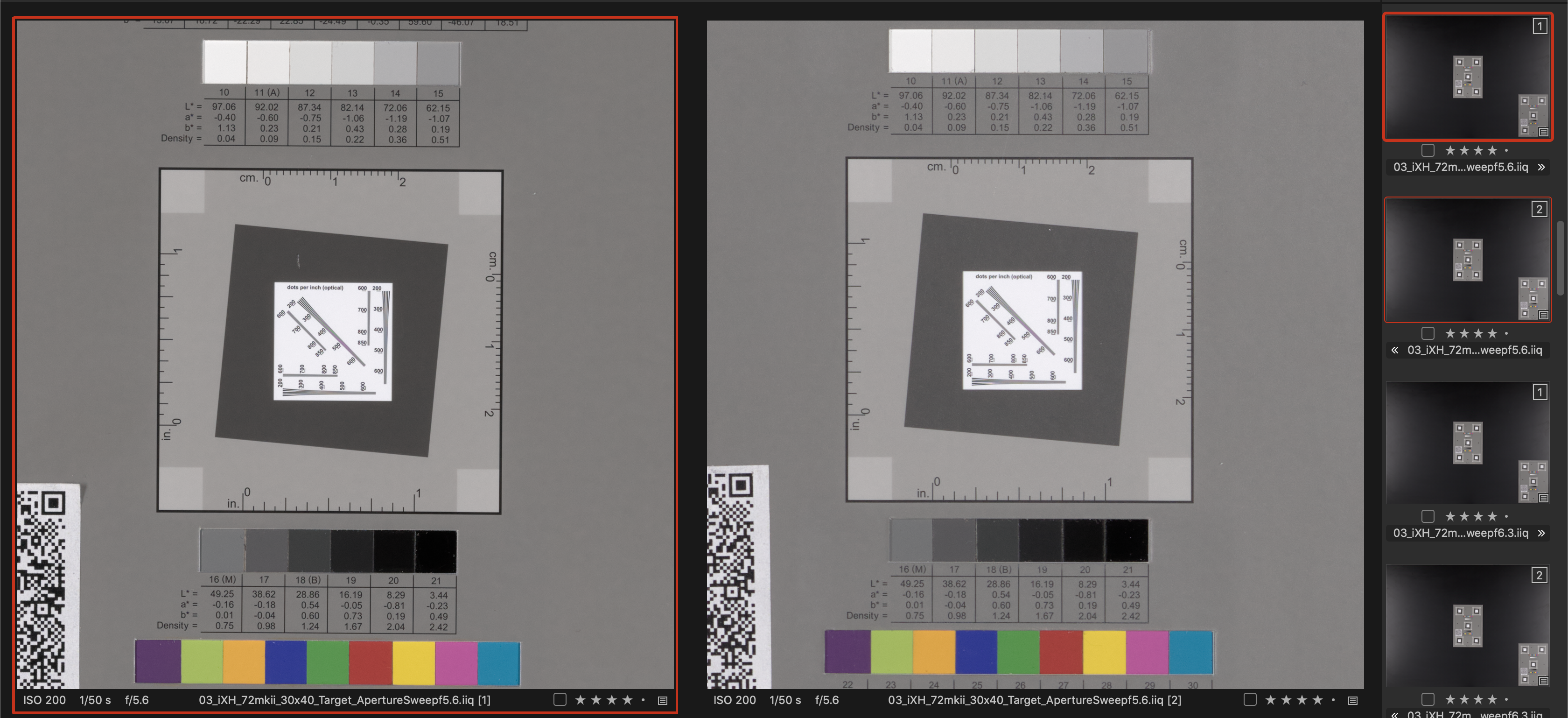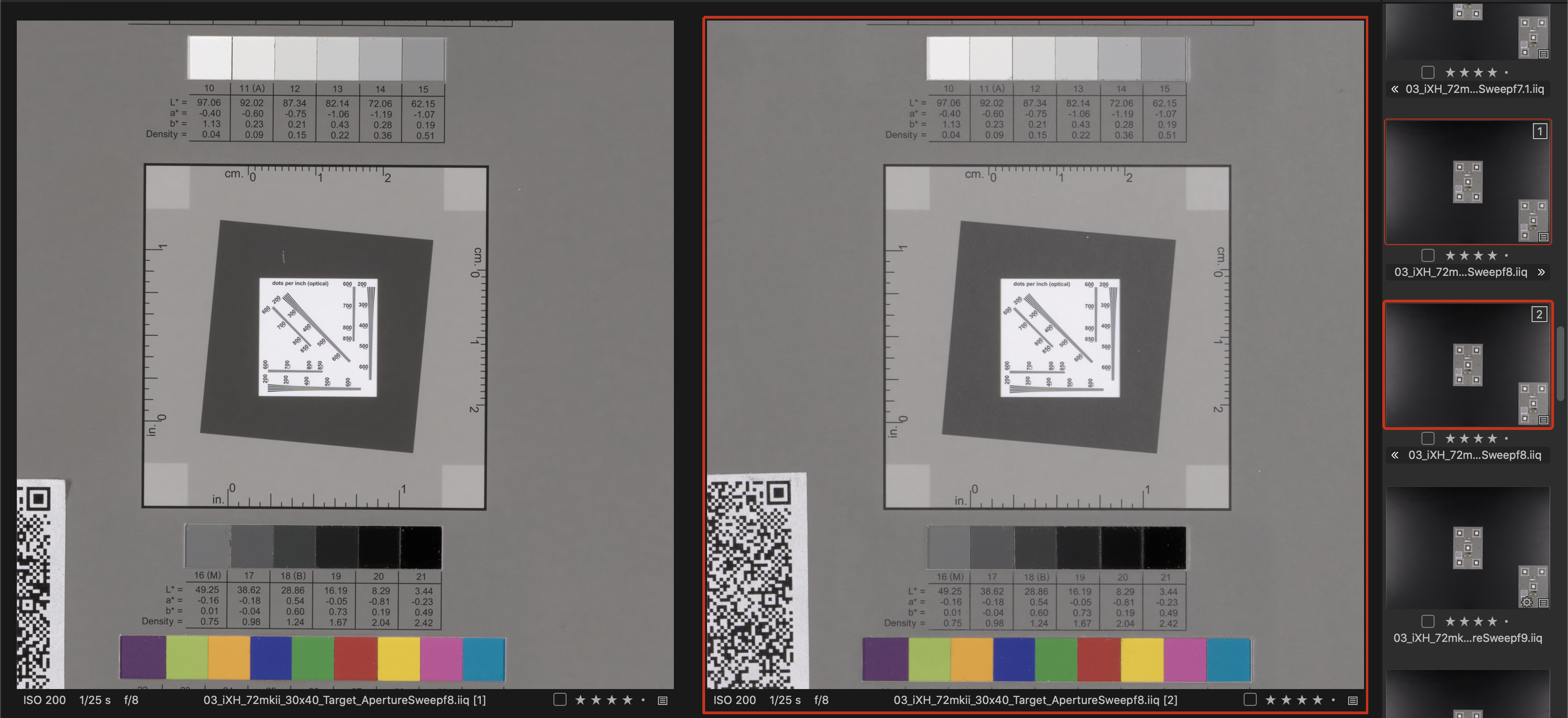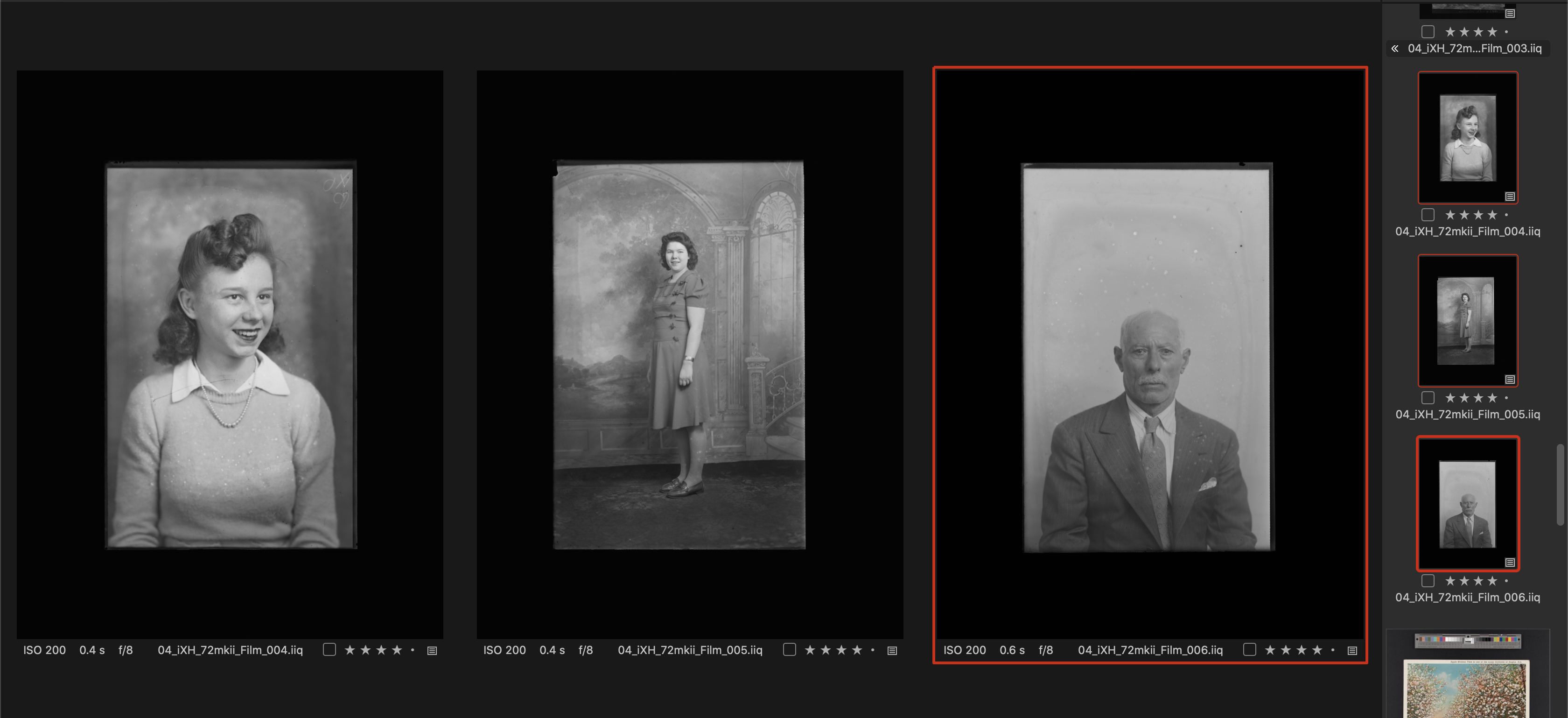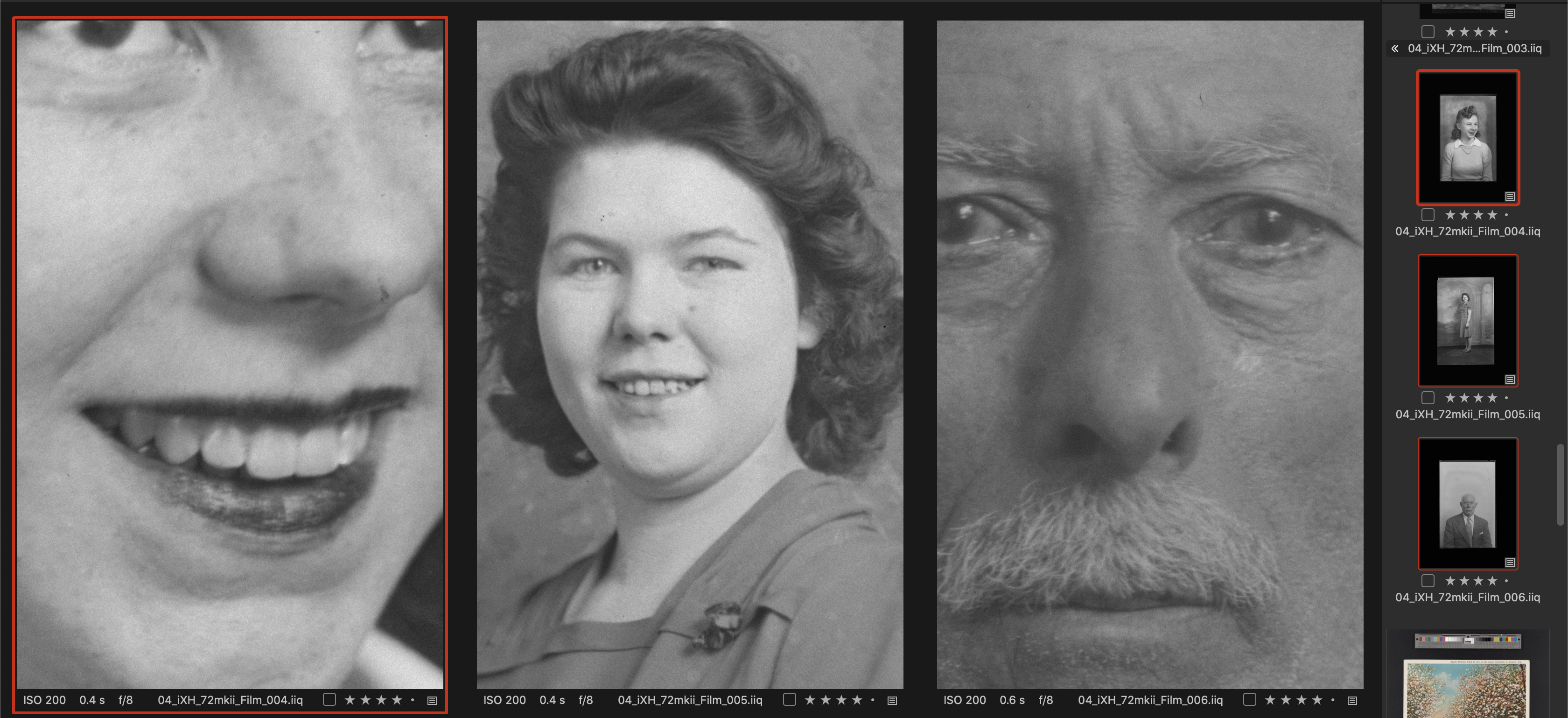Editors note (by Doug Peterson, Head of R+D at Digital Transitions)
The Phase One iXH 150MP (both color and Achromatic versions) and Phase One 72mm Mk II are now available for order. DT does not rely on manufacturers specifications, and insists on doing our own real-world testing. Last year we acquired DT Heritage, now the service arm of Digital Transitions; they have experience digitizing literally millions of real-world items across a huge variety of museums, archives, libraries, and individuals. Who better to see how this new camera and lens perform under realistic production conditions?
Now to Rachel Larsen, Senior Technician at DT Heritage, who led their testing…
—
Testing can often involve fancy charts that cost thousands of dollars, but sometimes it is easier to start with a more familiar item like a $20 bill. My approach to testing is borrowed from my approach to normal production: be thorough but be practical. That comes through in the first test I ran: the Tented Bill Test.
Tented Bill Test
A tented bill provides a fast, practical, and surprisingly effective gauge of the shape of the focus plane. Many lenses have focus shapes that curve upward at the edges or corners, a serious obstacle when photographing flat objects. By focusing on a target in the center of the table, and a tented bill in the corner, I can tell if the focus plane is flat or curved. If it is flat, the bill will be sharpest where it touches the table. If it is curved, the bill will be sharpest at a point distinctly above the table. Repeating this for each corner also confirms alignment – that is, that the camera, lens, and table are all parallel (otherwise the focus plane would be higher on the bills on one side).
The results of this test were that the 72mm Mk II has a very flat field of focus. That’s exactly what we want.
Aperture Sweep
My second test is typically an Aperture Sweep; capturing a target in the center and corner at each aperture (e.g. f/5.6, f/7, f/8). This tells us how far the lens has to be stopped down before it is acceptably sharp in the corner. This is a very stressful test for most lenses, since our standards for “acceptably” sharp are corners that are equally visually sharp to the center (otherwise a viewer might think the content of the corner of an object, such as a note in the margins of a page, is smudged or less sharp in real life). Critically the lens should be acceptably sharp in the corner before the lens reaches its diffraction limit; otherwise, getting homogenous sharpness requires getting lower absolute sharpness.
The results of this test were that the 72mm Mk II is equally sharp in the corners as the center at somewhere around f/6.3 to f/7, well before diffraction becomes problematic. That’s exactly what we want.
Wide Open aperture. Center of frame (shown on left) at 100% vs Corner of Frame (shown on right) at 100%
Stopped down to f/8. Center of frame (shown on left) at 100% vs Corner of Frame (shown on right) at 100%
Real Materials
Now that we’ve confirmed the lens has a flat field of focus, the lens, camera, and table are parallel, and that we can safely use f/8, we can do what I think is the most important testing for a new lens: real-world material of various sizes.
Different sizes are important because a lens can be great at one size of material and lousy at another. We routinely digitize material of a huge variety of sizes, so it’s valuable to know what range of material this lens can properly handle. The Phase One 72mm Mk II has a stated performance range of 2,000 ppi (for a subject ~7” long) to 100 ppi (for a subject ~12 feet long, without stitching), but we rarely go below 300 ppi (especially true in this case, since the iXH captures an 48” x 36” area at 300 ppi) so I tested from 250 ppi to 2,000 ppi .
A glass plate of a handsome fellow, full frame (left), 100% of his face (center), and 100% of the corner (right). We love using glass plates for lens and camera testing because they have such great detail, are flat (so you don’t confuse depth of field with a curved object with lens sharpness) and the sharpness of the edge of the glass itself is a great baseline reference
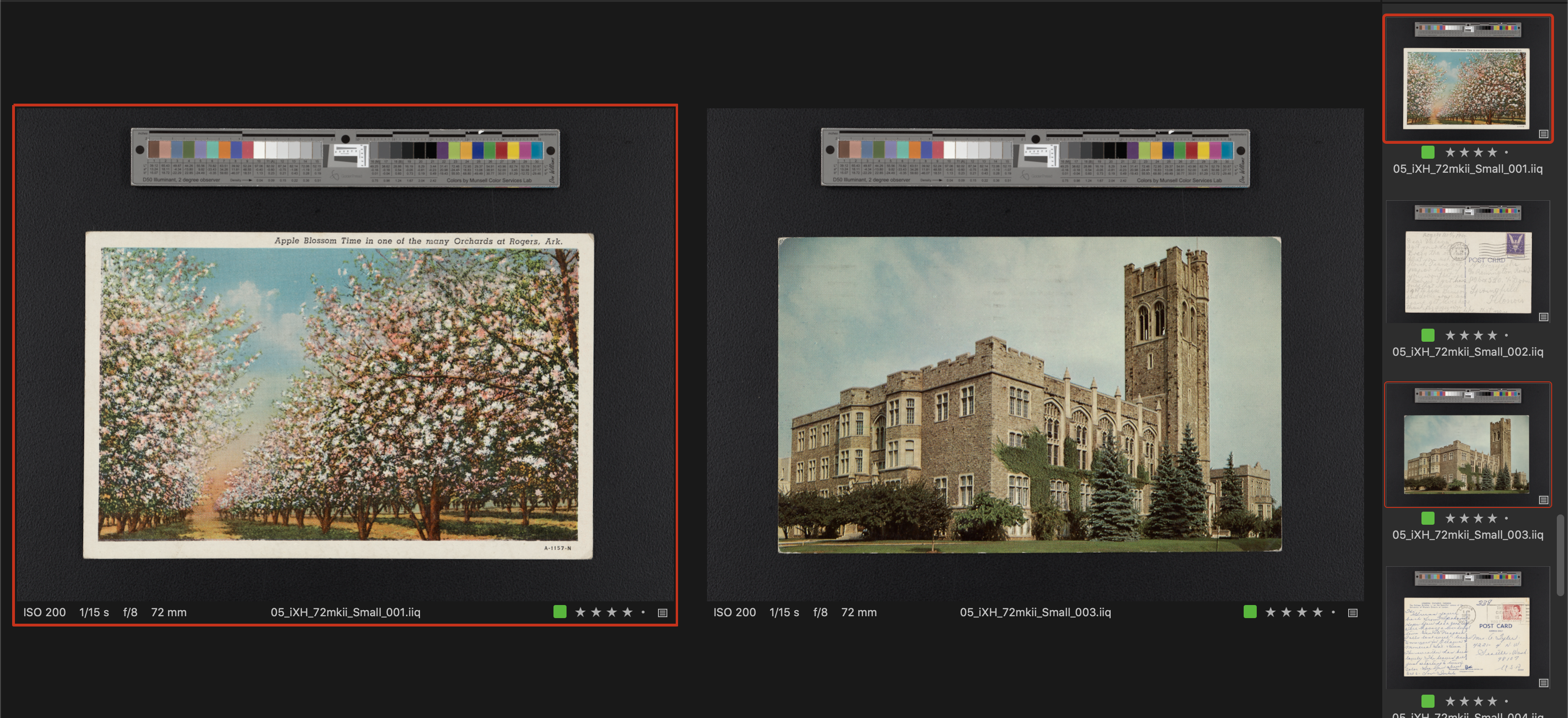
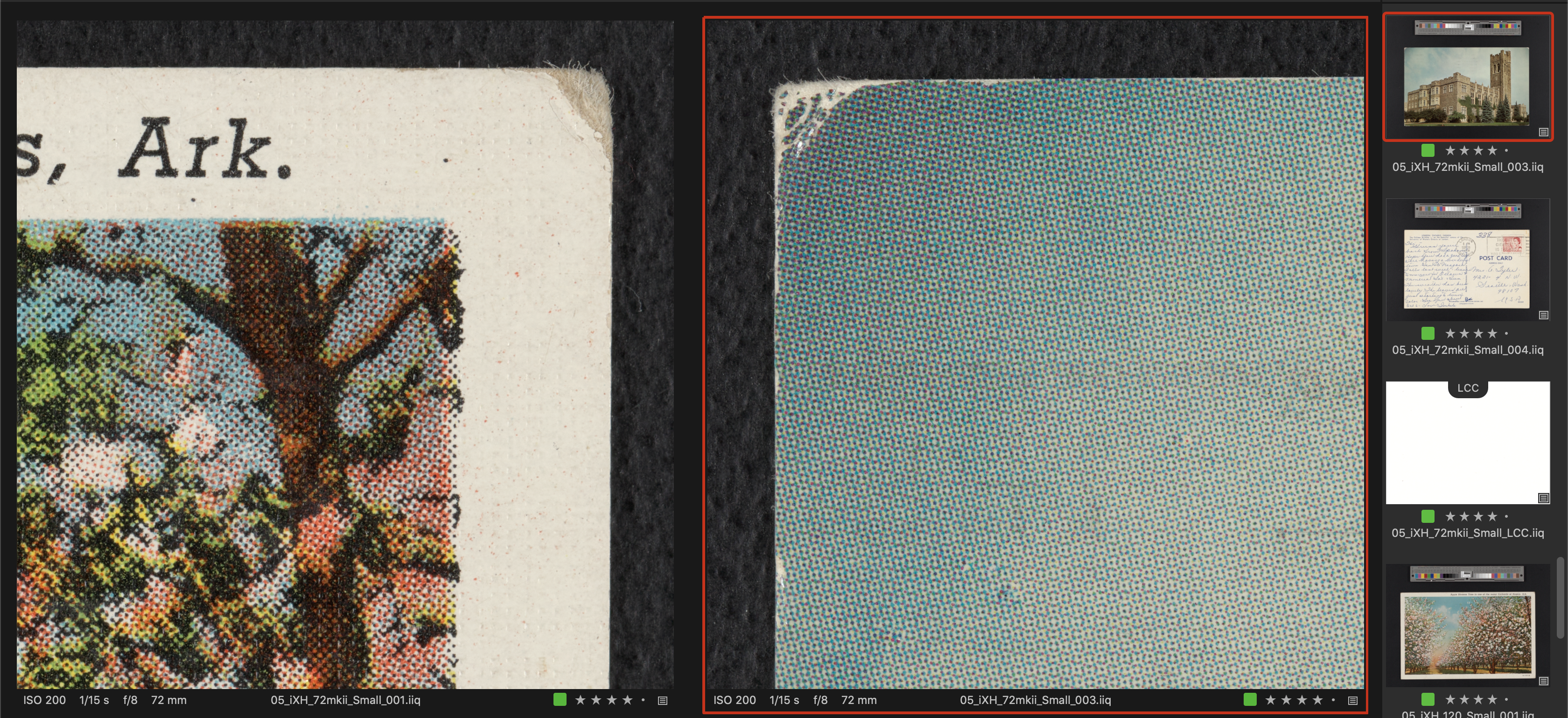
Offset printed postcards are a great test; many camera systems will have issues with moire or with resolving the fine detail of the ink dots themselves. Also note the fibers of paper at the edge of the corner of the postcard!
To cover the large-and-oversized category we chose a commercial map with homogenous detail. You can almost see our office in Chantilly!
FADGI Testing
DT Heritage is a huge proponent of the FADGI Image Quality Standards specifically, and of objective target-based analysis of image quality in general. However, we normally perform such testing AFTER we’ve done the visual sniff testing I’ve outlined above. Also in this case, coronavirus-related closures stood between us and acquiring proper materials with which to take an LCC on our largest bench. Later this month we will release a follow-up article with the results of ISA Targets in our sample images using Golden Thread Software. Please let us know if you’d like to be notified when this article is available.
Workflow / Other Considerations
With other camera systems I would need to test for lens drift and lens settling, which can happen when a general-purpose lens is used pointing downward. With the iXG and iXH that simply does not happen.
One major workflow advantage of this lens is that it does not require extension tubes to reach its 2,000 ppi maximum, which, along with TruePPI provided by the DT AutoColumn and Capture One CH, means we can easily change from material as large as our 40×60” table, to shooting small material at 2,000 ppi , with a single click.
Raw File Download
Below you can find the RAW files (and TIFFs, if you’re not a Capture One CH user) for the images used in this test, as well as some additional image samples created with the iXH and 72mm Mk II lens.
Download RAW Files

